Heresy and History
Raoul Vaneigem
What is it that lies beneath the label of “heresy”? This is the question that drives Raoul Vaneigem's massive volume, Resistance to Christianity: A Chronological Encyclopedia of Heresy from the Beginning to the 18th Century. First published in French in 1993, and finally released in English translation in November 2023, the book’s aim is “to examine the resistance that the inclination to natural liberty has, for nearly twenty centuries, opposed to…Christian oppression.”
A member of the Situationist International from 1961 to 1970, Vaneigem (at 90 years old, still very much alive) writes from the perspective of a society that has moved beyond not just Christianity but all religions, which have historically been used to justify and strengthen the ruling classes' domination of society and suppression of dissent.
Although Resistance to Christianity is not Vaneigem’s first book on religious movements, it is surely his most ambitious. Vaneigem offers in-depth presentations of virtually every major heresy ever identified (or manufactured) and violently suppressed by the Church throughout the entire historical period in which Christianity was invented, developed, and violently imposed upon the world. Although some of these are surely reactionary, others are clearly revolutionary, and the book takes care to distinguish the two. Perhaps unsurprisingly, the primary exponents of the revolutionary ones have been women.
If the history of struggles against authoritarian religious orthodoxy speak to us today, this is because they were struggles over the individual’s right to create — against what Vaneigem calls the “social forms of antiphysis” — a freer destiny than that promised to us by the exploitative fantasy of a "beyond" of the human.
While the religious edifice of Christianity might be in its terminal phase of collapse, we are by no means rid of the impulse that produced it. As Vaneigem perspicuously asks already in the early 1990s, “the Christian sentiment now searches for new trickle beds. Will it find them in a landscape that ecological transformation is preparing to remodel?” Two decades later, this question has lost nothing of its poignancy.
Resistance to Christianity is available now from Columbia University Press. Below is the complete text of Vaneigem’s “Forward” to the volume.
The rising tide of the commodity has not left standing a single traditional value of the past on the shore on which the two thousand years of the Christian era have been brought to an end. Did not this tide, by drowning the mass ideologies that had themselves hastily brought the religious edifice crashing down (at the moment in history at which the State was taking over from God in the conduct of terrestrial affairs), also inevitably push towards annihilation the last remnants of a Church whose mysteries had already been domesticated by the Second Vatican Council?1
The indifference into which those beliefs that are governed by rituals performed by the Party or by the ecclesiastical bureaucracy have sunk has awakened a new interest in the history of those beliefs. This interest is not motivated by any sort of obsolete desire — be it to make apologies, or to denigrate. It is a curiosity that is quite simply preoccupied with its own pleasure and that takes pride in its ability to play the game of discovering that which the official truths tried so zealously to bury beneath the ultima ratio2 of their dogmatic canon.
Could one even imagine that Christianity, once it had been cleansed of its sacred apparatus by the powerful waters of commercialism, would have been able to escape from the crusher that, in less than a half-century, has smashed the sacrificial rocks — known under the names of nationalism, liberalism, socialism, fascism, and communism — that generations of people have adored with a mixture of fascination and terror?
Now that nothing remains of yesterday’s shipwrecks but a sea that is relatively calm and only weakly agitated by ripples of derision, this curiosity supplies the form of archaeology that is best suited to examining objects that have long been coated with holiness. Inspiring respect or profanation, these objects have until now only called for…I wouldn’t say impartiality, but the naïve indiscretion of truth-seekers who are without either prejudices or guile.
In the same way as it is now possible to examine the birth, development, and decline of Bolshevism without exposing oneself to accusations of materialism, spiritualism, Marxism, revisionism, Stalinism, or Trotskyism (which today give rise to smiles, and yet once were paid for in blood), attention can now be focused on the Christian religion without reference to the repudiations and praises dispensed by theology and philosophy, or to that archaic trompe-l’oeil confrontation in which the God of some and the non-God of the others meet up at the same vanishing point in the celestial realm of ideas – that is to say, at the same level of abstraction from corporeal and terrestrial reality.
Today, along with a feeling for the pre-eminence of the living, there is, at least for those who remain naïve, an astonishment that wants to understand why and by which channels the world of ideas has so often required a pound of flesh slashed from the heart in exchange for a glimpse at its own chimerical horizons.
The current crisis of transformation, which is today forcing the economy either to destroy itself or to reconstruct itself (one way or the other, it will take the world along with it), has the merit of opening minds to the origins of inhumanity and to the available means of remedying it. The politics of sterilization, which that has rendered the entire planet (as well as whole societies, mindsets, and bodies) gangrenous, has also highlighted, thanks to the extremity of the situation to which it has given rise, the ways in which mankind — subjecting nature and human beings to market exploitation — produces, at the expense of the living, an economy that subjugates it to a power that was initially mythical in nature and that subsequently became ideological.
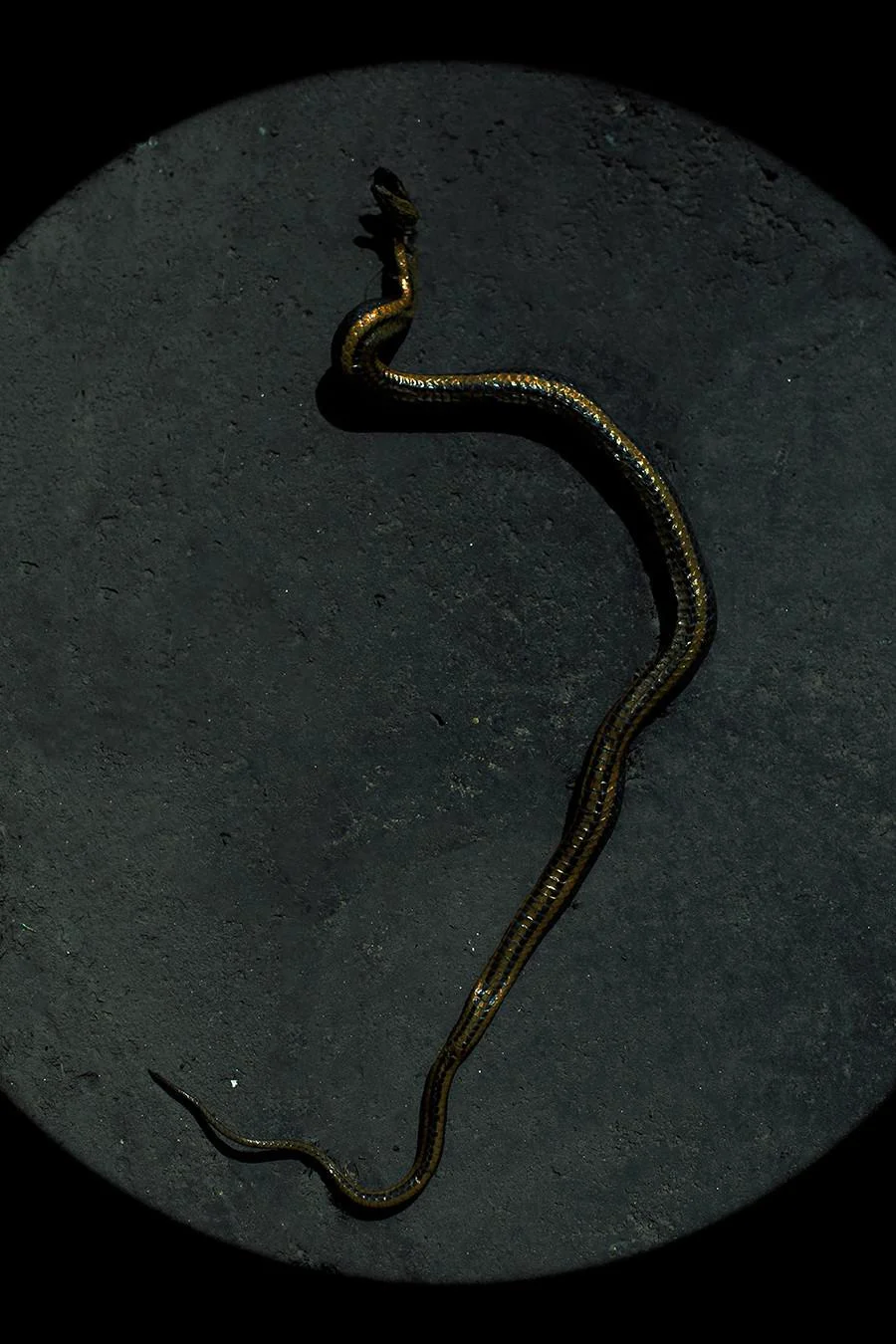
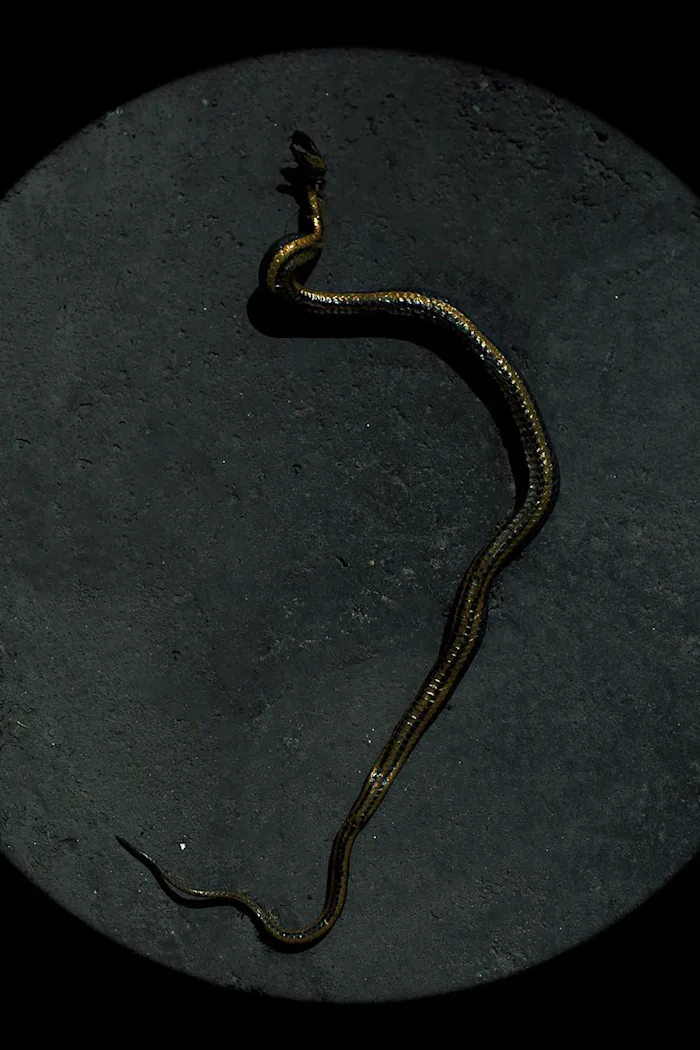
Driven by a system of exchange that they themselves created and that, even as it tore them from themselves, shaped them without ever completely mechanizing their bodies, their consciousnesses, or their subconscious minds, individuals have, over the course of the millennia, been insignificant compared to the formidable power that has fed upon their blood. How could their miserable condition not have induced them to place the halo of an absolute authority, as perfect as the celestial vault, on the transcendence of a Father whose decrees — administering fortune and misfortune alike — proclaimed his eternal and capricious authority over endless generations?
Invested with an extra-terrestrial sovereignty whose mythical meaning only the priests had the ability to decipher, the economy nevertheless revealed its fundamental materiality through the interests that, in a free-for-all that was secularized and could therefore no longer be profaned, brought forth temporal masters and business leaders.
Religion — that is to say, “that which binds” [ce qui relie] — placed in the hands of a fantastic deity the central link of a chain that, interlocking tyranny and slavery from one end to the other, also anchored to the earth the celestial power that people’s own scorn for themselves had consecrated as sovereign, unchanging, and intangible.
Thus God drew from the cyclical and archaic world, which was enclosed within the moats and ramparts of the agrarian economy, a permanence that, during great tumults concerning the “end of time,” was ceaselessly contradicted by the innovative politics of commerce and free-exchange — a politics that unclasped the links of mythic time, corroded the sacred with acerbic spittle, and introduced into the citadels of conservatism the Trojan Horse of progress.
Nevertheless, despite the state of conflict that repeatedly opposed the conquest of new markets to the ownership of land, the antagonistic emanations of these competing economic models — these emanations being temporal and spiritual kings, on the one hand, and priests, philosophy, and theology, on the other — continued to constitute the two halves of God (that is, for as long as the agrarian structure and its mentality remained dominant).
By decapitating Louis XVI, the last monarch of the Divine Right, the French Revolution slew the two-headed hydra of temporal and spiritual power, which not long before (in the last of a lengthy series of crimes) had sent the young Knight de La Barre3 to the scaffold for allegedly committing the crime of impiety.4
If the Roman Church, now deprived of the secular arms that had once enforced the truth of its dogma, slowly descended to the rank of a spiritual scarecrow, this was because the era of the lords and priests and its dominant economy had come to an end, thereby depriving Rome of the penal ferocity that had previously underwritten the Church’s arrogance.
The Ancien Régime, having been definitively crushed beneath the inexorable weight of market freedom and of the “democracy” of that which is profitable, was dismantled at the same time as its ramparts, palaces, siege mentalities, and old mythic ways of thinking were being demolished.
At that moment, God succumbed to the hatchet blow dealt by a State that was thenceforth able to rule without the guarantees provided by its former celestial accomplice. Christianity then entered the spectacular history of the commodity. Come the dawn of the twenty-first century5, Christianity will emerge from that history crushed, just as other herd mentality ideologies have been.
The fact that a kind of religious spirit and the sinister colors of fanaticism continue to subsist at the heart of the systems of ideas that have supplanted Christian mythology — including opinions that are furiously hostile to Christian allegiances — is demonstrated well enough by the exaltation of militants and the hysteria of the crowds that we see during the great Masses that are solemnly presided over by the tribunes and tub-thumpers of nationalism, liberalism, socialism, fascism, and communism.
The hysterical uprooting that pulls a man out of his body in order to identify him with a collective and abstract body (a nation, a State, a party, a cause) is indistinguishable from a spiritual adherence — I might even say a spiritual adhesion — to a God whose gaze, imbued with both solicitude and scorn, symbolically expresses the relations between the mechanical abstraction of profit and the living matter that is subjected to ruthless exploitation.
There have been more upheavals in the last three decades than in the previous ten millennia. By selling off ideologies from the shelves of indifference, the self-services6 of consumption-at-any-price have, volens nolens7, stripped the individual of the character armor8 that conceals him from himself, and have thereby condemned him to constrained desires (and this without offering him any other way of letting off steam than engaging in the dead passion for destroying and being destroyed).9 Thus, little by little, one sees the gradual awakening of a will to live that has never ceased to appeal to the conjoined creation and enjoyment of oneself and the world. Isn’t the situation now a matter of each person attaining amorous possession of the universe for him- or herself?


The individual, which only yesterday was an object manipulated by a Spirit and nourished by its very substance, today becomes — by discovering on the Earth and in his or her own flesh the place of his or her living reality — the subject of a destiny that will be constructed by means of a renewed alliance with nature. Bored and wearied by artificial desires that ascribed to him a profit-minded ability to reason and that, over the centuries, led him to a place where he had nothing to do, the individual today contemplates with an amused curiosity the objects that once objectified him or her and that now litter the shores of his or her past — fragments of a death that is, today, refused.
The feeble enthusiasm now shown for herd-like gatherings is indicative of a steady decline of religious and ideological faith within the industrialized countries. Nonetheless, the hacks employed by the newspapers — who can only galvanize a desperately lethargic, everyday spectacle by fits and starts — haven’t failed, when faced with a few outbursts of archaic and barbaric behavior, to cry out for the return of religion and nationalism. But, as Diderot asks, which ass will pass this shit?10 Which economic imperative could provide a buttress for the ramparts of a by-gone age — hastily rebuilt by desperation and resentment — or indeed prevent them from collapsing under the weight of an economic shortfall?
There is no doubt that the end of religious institutions does not mean the end of religiosity. Driven out of the mainstream by the debacle of the great ideologies, and imperfectly satisfied by the sects that are increasingly poorly housed within the Catholic and Protestant Churches — which are filled with the intolerable, lingering odors of the latest totalitarianism — the Christian sentiment now searches for new trickle beds [lits d’ecoulement].
Will it find them in a landscape that ecological transformation is preparing to remodel? Some people suspect as much in the wake of the advent of an ecological capitalism that seeks to obtain from environmental remediation a profitability that the desertification of soils, sub-soils, and hopes for survival can no longer guarantee. When celestial abilities are attributed to terrestrial divinities (Gaia, Magna Mater, sylphs, dryads, or other elementary forces), it makes little difference to me who is doing the attribution. As long as it does not require self-sacrifice, no belief is repugnant to that which is truly human.
On the other hand, I am delighted by people learning about the autonomy that, due the collapse of the supporters of and supports for the past, engenders the necessity of going it alone. I am delighted by the end of crowds, by the emergence of individuals’ awareness of the fight for life, by their resolution to vanquish the fear of the self (from which all the other fears are derived), and by the emergence of a creativity that is substituting itself for the necessity of working for a living — a necessity that does not allow new generations to move toward a true humanity. Even if its advent is not inevitable, for the first time in history this creativity is in the hands of men, women and, most especially, children who are educated in the enjoyment of life rather than in its morbid refusal.
Such is the perspective according to which I wish to examine the resistance with which the inclination to natural liberty has, for nearly twenty centuries, responded to the antiphysis11 of Christian oppression.
Regardless of the domain (historical, scientific, philosophical, social, economic, or artistic), I cannot conceive of an analysis that could claim to work outside of the individual life history in which are inscribed the everyday gestures of the person who has resolved to undertake that analysis. Although circumstances have spared me from contact with religion, I have always experienced a singular revulsion for the deadly empire that is emblazoned with a cross and that has been driven into the hearts of all those who have been born into life. I therefore understand the indignation of Karlheinz Deschner when, in his Kriminalgeschicte des Christentmus,12 he excoriates the murders, impostures, and falsifications committed by the Catholic Church, but I do not know that his polemic, which penetrates far into the adversary’s terrain, has gained for him the recognition and interest that he had every reason to expect. And one might ask, in any case: why revive the embers of the millennium pyre with angry breaths, when the winds of a new era have condemned them to extinguished?
Besides, shouldn’t there be something that dissuades us from the use of a condemnatory tone [such as Deschner’s] in the simple, obvious fact that atheists, freethinkers, anti-clericals, and other militants of the “Good God in Shit”13 — far from abandoning the Judeo-Christian comportment — have most often adopted its most odious practices: sacrifice, cults of martyrdom, guilt, making people feel guilty, hatred of amorous desire, scorn for the body, fascination with the Spirit, quests for salvational suffering, fanaticism, and obedience to a master, to a cause, to a party? What better tribute to orthodoxy is there than heresy, than a non-conformism that infatuates itself with contesting the axis around which it in fact gravitates?
Little interested in arbitrating the dubious combat between victims and executioners, I prefer to liberate from the past — in which the forgotten, scorned, misunderstood, prejudged and calumnied have been buried and stratified by the famous objectivity of the historians — the healing that human tissue, irrigated by the freedoms of nature, untiringly performs upon itself in order to reconstitute and strengthen itself by weaving the social network (and this in spite of the deleterious effects of fear, dereliction, suffering, faith in the beyond, and the consolations of death).
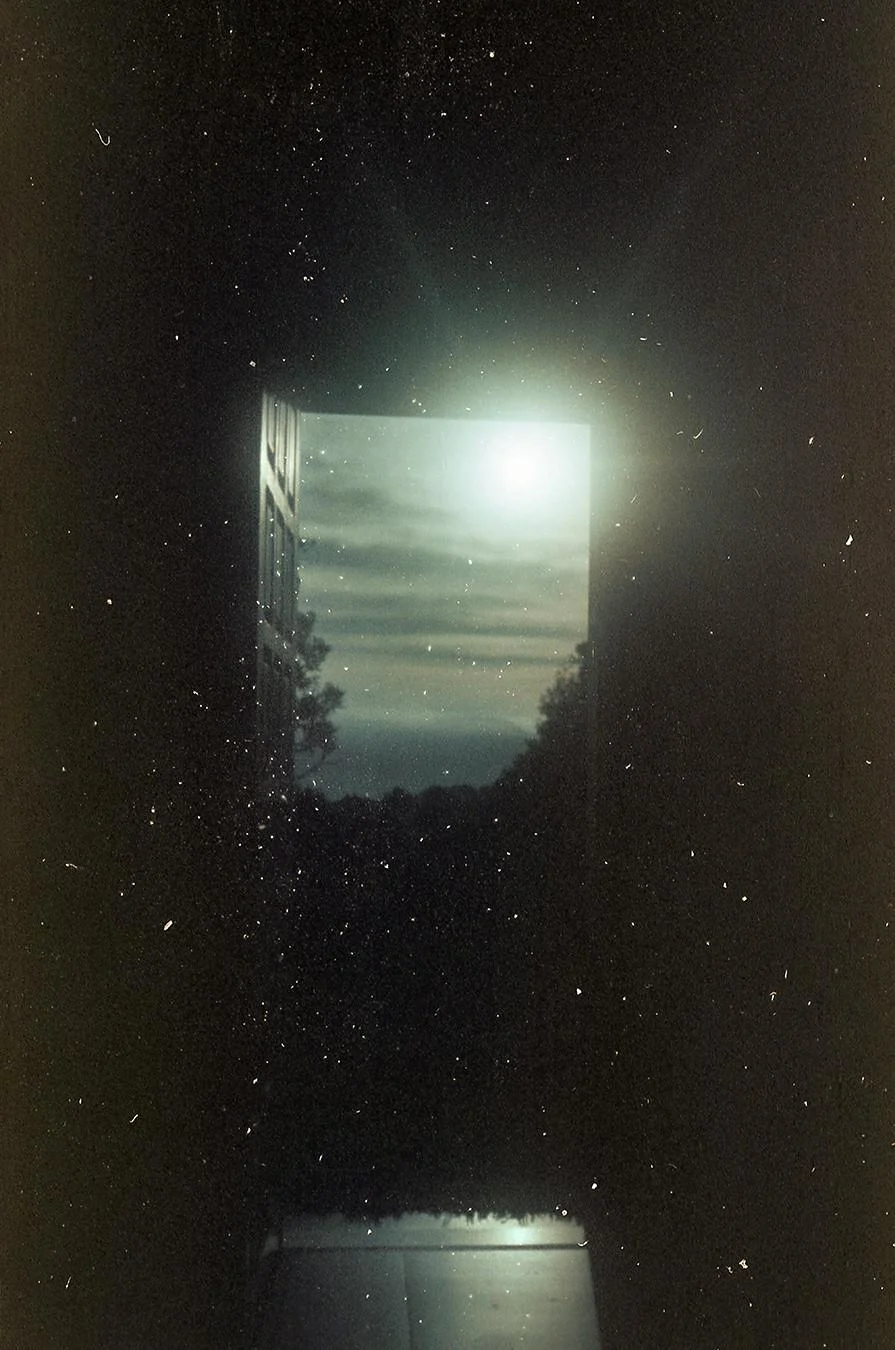
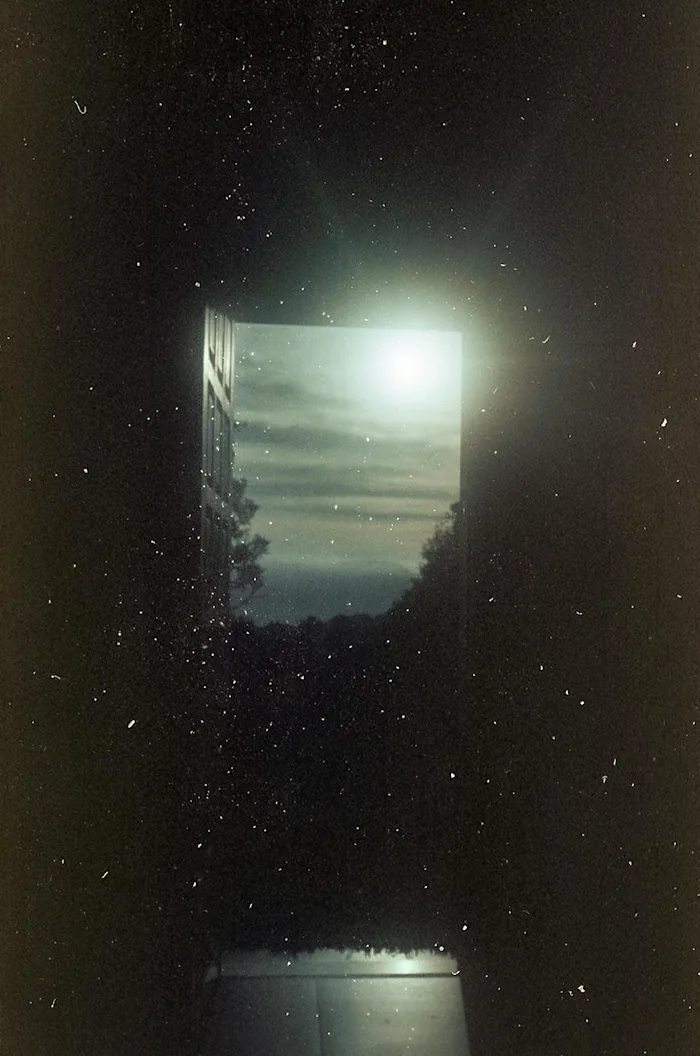
The act of taking hold of the life that is trapped underneath death, which has seized hold of life through a subtle mix of violence and persuasion, in fact revives beings and things that are no longer identified according to the traditional perspective in which God, the State and the Economy collect the tears of terrestrial valleys in exchange for a happiness that is endlessly deferred; these beings and things now quiver in response to the beating of the wings of the living, which is more perceptible today because it is no longer stifled by the weight of ancient oppression.
Therefore, the reasons for being amazed by a life that is so obstinate that it flowers again by breaking through the asphalt of an inhuman history also raise, in counterpoint, several doubts about the honesty and quality of the scholars and specialists who are accustomed to regarding this history as if it were conquered terrain.
I accept the facts that a theologian — who bases his career on painting glossy pictures of his God in order to expound upon His radiance to those who are too blind to perceive its obviousness in day-to-day life — orders things according to his personal beliefs; that he gives his jargon the appearance of reasonable language, calling desire “temptation,” pleasure “sin,” and the embrace of lovers “fornication”; that he venerates with the title of “saint” the forerunners of the Heroes of the People who were honored by Lenin14; and that he uses the Gospels in much the same way as Joseph Stalin attributed truthfulness to the Great Soviet Encyclopedia.15 This is what results, not from lies, but from proselytism. Encountering the same attitude in a historian who isn’t inspired by such vast designs is enough, it will surely be agreed, to leave one perplexed.
What is one to think of those university scholars who are trained in the science of discrediting the authenticity of manuscripts that have been handed down from copyist to copyist and stuffed full of interpolations along the way, but who nevertheless comment upon certain works as if they were original texts, and who set the date of the composition of the Epistles at the very beginning of the Christian era, when they were in fact rewritten, if not actually written, by Marcion, reorganized by Tatian, and submitted to corrections up until the fourth century, and yet are nonetheless attributed to a certain Saul, known as Paul of Tarsus, a Roman citizen who allegedly lived around 60 [C.E.], when in point of fact Tarsus was only Romanized in 150 [C.E.]?
No one is unaware that the manuscripts of the canonical Gospels and of the Acts of the Apostles appeared in the fourth century (at the earliest) and constituted — under the aegis of Constantine — the library of propaganda that Eusebius of Caesarea and his scribes revised and distributed to all the Churches, which were thereby united upon the same dogmatic base. Apparently these facts aren’t of the type to trouble the good consciences of those researchers who, with a beautiful unanimity, take them for reports by living beings who were near contemporaries of the witnesses or apostles of an Adonai, Kyrios or Lord whose name (Joshua/Jesus) didn’t actually impose itself in its symbolic meaning of “God saved, saves, will save” until the end of the first century. The only sources of dissonance in this ecstatic concert are the atheists Dupuy, Alfaric, Couchoud, Kryvelev, and Dubourg; the Catholics Loisy and Guillemin; and the Protestant Bultmann.
In their attempts to define polytheism and the various cults as “strangers to the faith,” few scholars have had qualms about using the terms “pagans” and “paganism,” by which the Church expressed its scorn for the beliefs of the pagani — the peasants, yokels, and bumpkins who proved impermeable to the civilization of the towns. What about the angels of the Jewish pantheon, the semi-legendary Paul and Peter, the anti-gnostic Irenaeus, the philosopher Augustine of Hippo, the anti-Semite Jerome, the spiritual master of the Inquisition, Dominic de Guzmán, and the murderer of the Fraticelli, John of Capistrano? Many of them were given the title “saint,” with which the Church compensated its real and mythical servants. There are likewise several biographies of Stalin in which he is referred to without irony as “Little Father of the People.”
It has been left up to atheism to furnish with the weapons of critique one of the Church’s most peremptory claims — namely, the historical existence of this Joshua/Jesus, on which the legitimacy of the Church’s temporal power is based. Sufficiently enraged to deny the divinity of Christ, an allegedly freethinking militancy nevertheless falls into the trap set by this Jesus, who is said to be a friend of the poor and a kind of Socrates preaching the truths of a Gospel-based socialism before dying on the cross due to his pacifistic insolence. Back in the second half of the second century, Tertullian and the Christian movement of the New Prophecy could not have dreamed of a better future for their hero, whom the atheists have purged of his Jewishness and disguised as Zorro16 for the edification and salvation of the working class.
Once we have granted the existence of this agitator who founded the Church and who was crucified under the orders of Pontius Pilate — and this without any contemporary corroborating testimony, and notwithstanding the fact that, at the time, the name “Jesus” still had the meaning of the Biblical “Joshua” — why should we be surprised to learn that erudite people have also accepted the following: the fraudulent listing of popes and bishops that was drafted by Eusebius of Caesarea; the back-dating of canonical texts; the interpolation of citations that actually date from the controversies of the fourth and fifth centuries into writings allegedly drafted in the second century; and the accusations of “heresy” that were made against the Dosithian, Nazarene, Sethian, Naassene, Ebionite, Melchizedekian, Elchasaite, Carpocratian, Basilidian, Marcionite, Anti-Marcionite, Montanist, Valentinian, Marcusian, Bardesanian and Novatian doctrines that, hundreds of years before the establishment of Christian orthodoxy, mixed together ideas of many origins and that the Constantinian Church — by crushing, remodeling and readjusting them — would subsequently use to build the unstable foundations of its dogma?
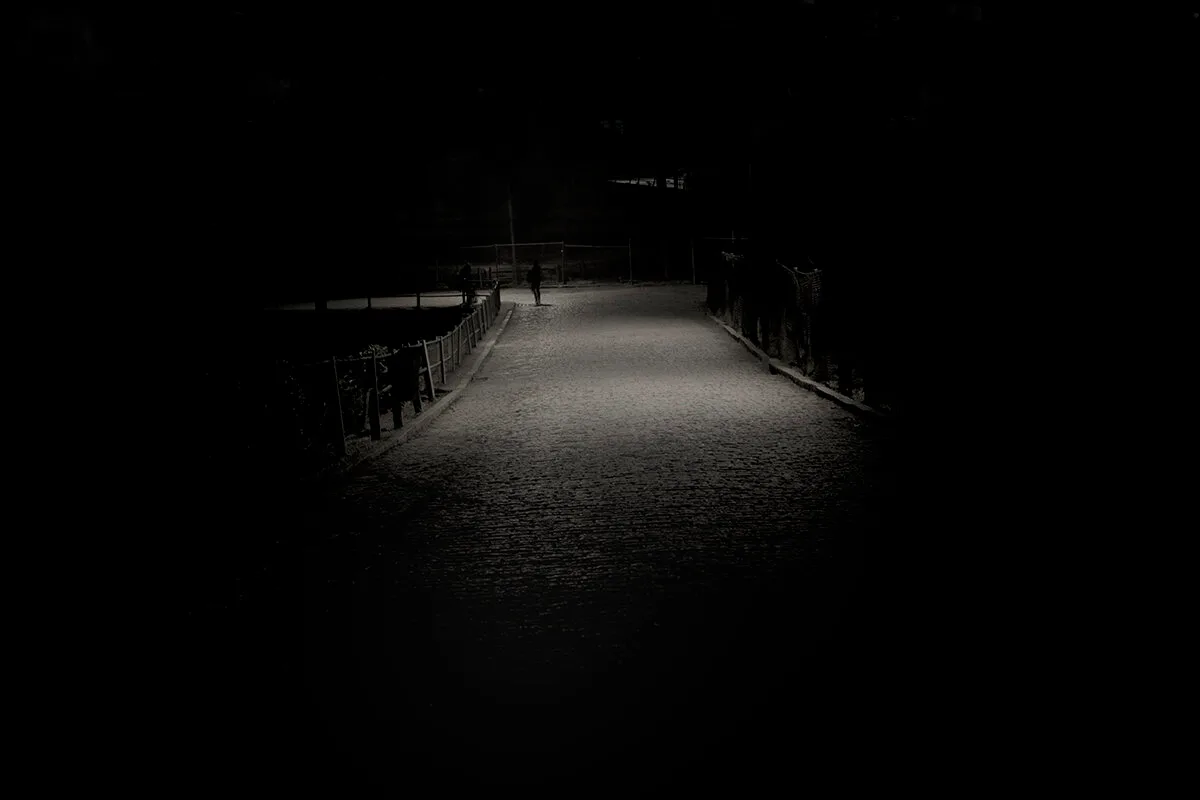
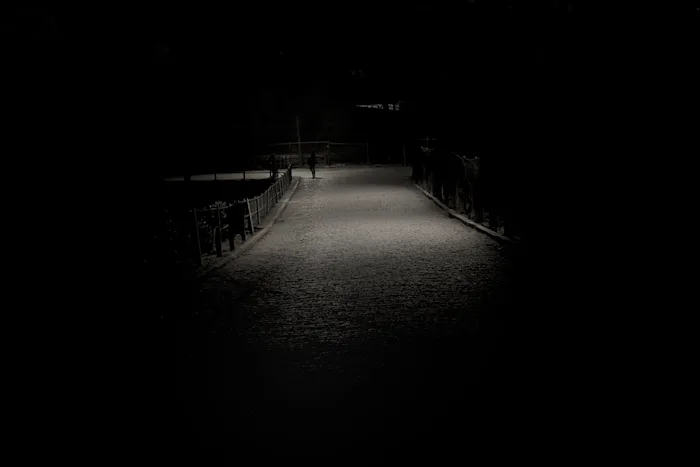
In the manner of Stalin recuperating Bolshevism while shooting Lenin’s companions, the Catholic “fathers” a posteriori condemned as heterodoxy not only non-Christian religious choices (hairesis in Greek), but also the diverse Christianities upon which the throne of Constantine had been raised. And the historians have followed suit by managing to discern around Peter — ‘the first Pope of Rome’ — the existence and praiseworthy efforts of a Catholic Church that was struggling against heretical perversions that threatened to corrupt the integrity of its canonical teachings.
Although it does not seem to me useless to highlight such impostures even at a time when it is difficult to imagine the pontifical authority and the clerical bureaucrats surviving the collapse of the last totalitarian citadels, I have found less charm in trying to rectify the opinion that nothing other than some kind of inertia of thought can explain the ambition to uncover from beneath the leathery history of the past the nervous excitations of the living, which are often weak and yet nonetheless manage to generate a force that is incomparably more effective than intellectual critique in the attempt to crush the tombstones of oppression.
What is it that is discovered under the label of heresy, under the labels by which the Church subjected to its control (by naming them) various human and inhuman behaviors, the condemnation of which reinforced the predominance of orthodoxy? Episcopalian rivalries and internecine struggles, such as Arianism, monophysism and English Lollardism. Or one discovers the movements of the body as it limps from constraint to license, from asceticism to debauchery, from repression to release, all of which were exploited with remarkable skill by the markets in penitence and death. Or even a more secretive attitude, one that was an object of perplexity to the religious police: the individual will to create — in opposition to the social forms of antiphysis — a destiny that is better suited to the promises of a nature that has, until now, been relegated by its exploitation to the ‘beyond’ of the human. One will easily divine the types of “heresies” or irreligious afterglows to which my curiosity is the most strongly attached.
For the sake of readers who are familiar with the Traité de savoir-vivre, the Livre des plaisirs and the Adresse aux vivants,17 I wish to make it clear that my apostil in Mouvement du libre-esprit18 is also applicable here: “A book has no other genius than the genius that comes from the pleasure of living better. It is thus understood, from the start, that the study of the Free Spirit does not obviate the fulfillment of such a requirement for me.”
On the other hand, a single merit must be granted to this work: it hopefully ignores the solicitations of the pleasures of knowing and the pleasures of the gay science19 as infrequently as possible. As a summary that, over the course of time, gradually reveals itself to be a clearing out of dead wood from an uncertain history, this book will, I feel, at least succeed in avoiding the risk of competing for the greatest number of errors, ignorant remarks, and fraudulent hypotheses with the majority of the volumes, monographs, and scholarly works that have, in our era, been piled on top of the heads of Jesus, the apostles, and their universal legatees.
If it is, finally, necessary to furnish an excuse for a style of writing in which one can hardly be said to find the care that I try to give to books whose subjects are not too far removed from my own way of my life, I would like simply to say that each subject has been given the treatment that it merits.
—January 1992
Translated by Bill Brown
Raoul Vaneigem’s Resistance to Christianity is available now through Columbia University Press.
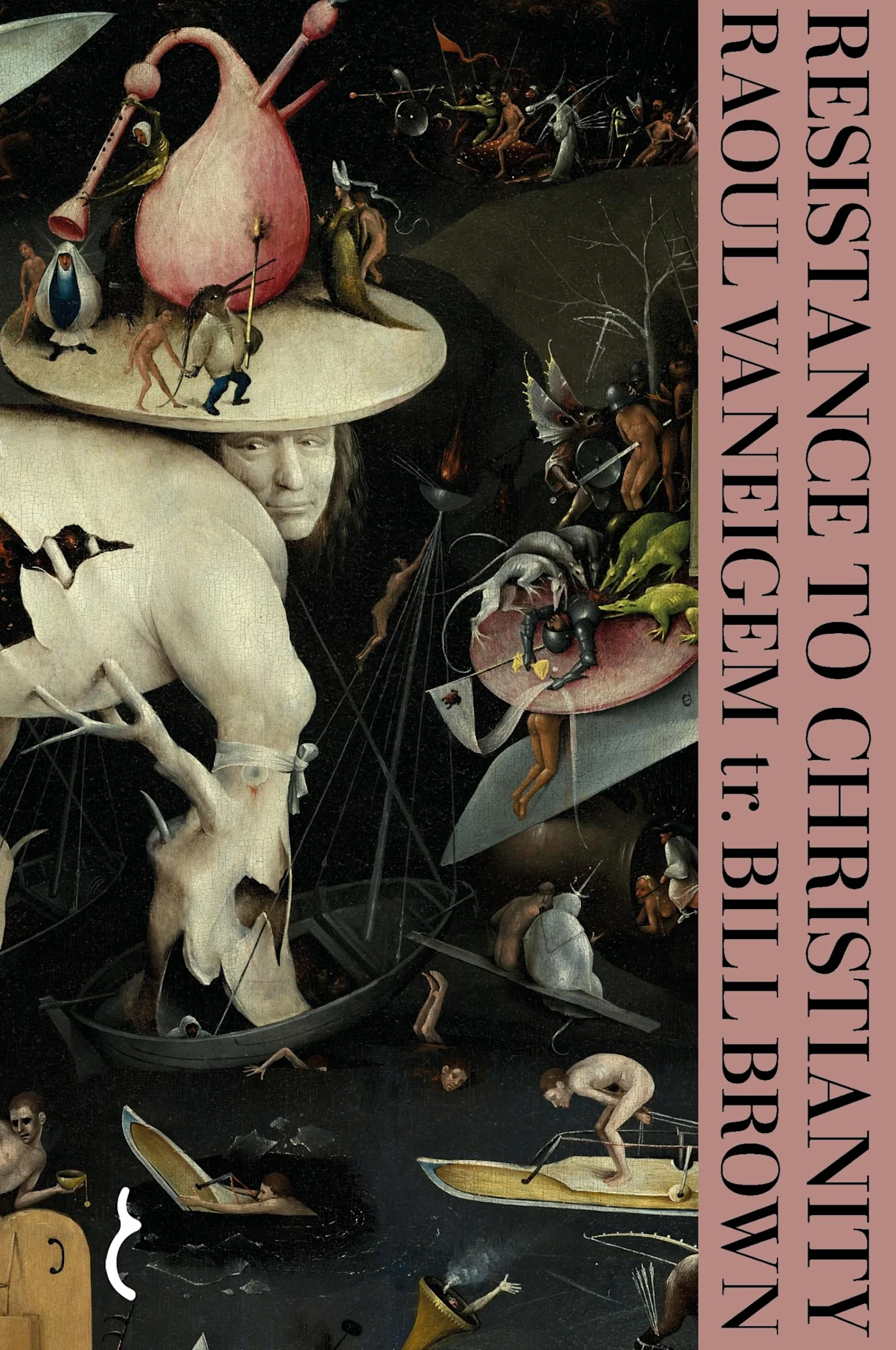

Images: Carolina Krieger
Notes
1. Convened by Pope John XXIII and held in Rome between 1962 and 1965, this council was intended to update the Catholic Church in order to meet the needs of an increasingly secular world. —trans.↰
2. Latin for ‘the final argument’. —trans.↰
3. On 1 July 1766, François-Jean Lefebvre de la Barre, a young French nobleman, was tortured, beheaded and burned, allegedly because he insulted a Roman Catholic procession and damaged a crucifix. —trans.↰
4. In the 1990s, the hostility — sometimes sly, sometimes openly declared — of the Catholic, Protestant, and Jewish establishments towards a novelist who’d been condemned to death for impiety by Islamic fanaticism speaks volumes about the democratic sincerity and spirit of tolerance allegedly possessed by these diverse sectarians of the “true God,” who are quite fortunately deprived of the aid of State terrorism. [Note that in August 2022, while this translation of Vaneigem’s book was being prepared for publication, the novelist in question, Salman Rushdie, the author of The Satanic Verses, was attacked and seriously injured at a public event in western New York. —trans..]↰
5. This numbering of the centuries is an arbitrary system that accredits an alleged messiah and thus still recalls the extravagant appropriation of time by the Church.↰
6. English in original. —trans.↰
7. Latin in original, meaning ‘willingly or unwillingly’. —trans.↰
8. A concept developed by Wilhelm Reich in Charakteranalyse: Technik und Grundlagen für studierende und praktizierende Analytiker, first published in German (Im Selbstverlage des Verfassers, 1933) and then revised and published in English as Character Analysis, trans. Vincent R. Carfagno, Farrar, Straus and Giroux, 1946. —trans.↰
9. Cf. the concept of "repressive desublimation" in Herbert Marcuse, One-Dimensional Man, Beacon Press, 1964. —trans.↰
10. Denis Diderot, reviewing the Salon of 1767, reprinted in Denis Diderot, Ruines et paysages: Salons de 1767, ed. Michel Delon, Else Marie Bulkdahl, Annette Lorenceau, Hermann, 2008. —trans.↰
11. In the works of François Rabelais (1483–1553), Physis is joyful and unashamed, and Antiphysis is hateful and destructive. —trans.↰
12. The first volume of this work (The Criminal History of Christianity) was published in 1986 by Rowohlt Verlag. A total of ten volumes were published before the author’s passing in 2014. —trans.↰
13. An anonymous song from the nineteenth century, sung by the French anarchist Ravachol (François Claudius Königstein) before his execution in 1892. —trans.↰
14. The Order of Lenin was established by the Central Executive Committee on 6 April 1930. It was the highest civilian decoration awarded by the Soviet Union. —trans.↰
15. First published between 1926 and 1947, this immense work was intended to further the aims of the Communist Party and the Soviet State. It was extensively revised in the 1950s. —trans.↰
16. A fictional character created in 1919 by Johnston McCulley, Zorro was a masked vigilante who defended working-class and Native American peoples against corrupt governmental officials and businessmen. —trans.↰
17. Vaneigem’s Traité de savoir-vivre a l’usage des jeunes générations (Paris: Gallimard, 1967), translated as The Revolution of Everyday Life by Donald Nicholson-Smith, PM Press, 2012; Le Livre des plaisirs (Encre, 1979), was translated as The Book of Pleasures by John Fullerton (Pending Press, 1983); and Adresse aux vivants sur la mort qui les gouverne (Seghers, 1990), is not yet translated into English. —trans.↰
18. Le Mouvement du libre-esprit: Généralites et témoignages sur les affleurements de la vie à la surface du Moyen-Age, de la Renaissance, et, incidemment, de notre époque Editions Ramsey, 1986, translated by Randall Cherry and Ian Patterson as The Movement of the Free Spirit: General Considerations and Firsthand Testimony Concerning Some Brief Flowerings of Life in the Middle Ages, the Renaissance, And, Incidentally, Our Own Time (Zone Books, 1994). Note the latter’s rendering of the apostil that Vaneigem mentions here: “If it is true that the test of a book’s intelligence is what it can offer toward the pleasure of living better, let me say, right from the start, that there is no such intention in my study of the movement of the Free Spirit. Not until that glad hour when we are at last rid of our delusions about the science of the experts, and are content simply to choose among pleasures, can we face the unknown with a lucid, passionate gaze” (12). —trans.↰
19. An allusion to the title of Friedrich Nietzsche’s The Gay Science, published in 1882. Also found in Rabelais’s Gargantua and Pantagruel (1532-4), this phrase refers to the skills required for writing good poetry. —trans.↰